I'm trying to plot live data on Python from an arduino through the serial port.
I found some difficulties with the annotate function: I don't know how to configure it or whether the place where I have put the annotate function is the right place or not.
import serial
import time
import numpy
import matplotlib.pyplot as plt
from drawnow import *
temperature= []
vitesse= []
charge= []
current= []
Time = []
cnt=0
# Create our serial object
arduinoData = serial.Serial('com5', 9600)
# Turn on matplotlib interactive mode to plot live data
plt.ion()
##fig1 = plt.figure()
STARTINGTIME = round(time.time(),2)
# A function that makes our desired plot
def makeFig():
plt.subplot(2,2,1)
plt.subplot(2,2,1).annotate(str(temperature)+','+ str(Time),
textcoords='offset points')
plt.title('Live Streaming Temperature Sensor Data')
plt.ylabel('Temperature C')
plt.grid(True)
plt.plot(temperature, 'ro-')
plt.subplot(2,2,2)
plt.subplot(2,2,2).annotate(str(vitesse)+','+ str(Time),
textcoords='offset points')
plt.title('Live Streaming Speed Sensor Data')
plt.ylabel('Speed KM/H')
plt.grid(True)
plt.plot(vitesse, 'bo-')
plt.subplot(2,2,3)
plt.subplot(2,2,3).annotate(str(charge)+','+ str(Time),
textcoords='offset points')
plt.title('Live Streaming SOC Sensor Data')
plt.ylabel('Battery Charge %')
plt.grid(True)
plt.plot(charge, 'go-')
plt.subplot(2,2,4)
plt.subplot(2,2,4).annotate(str(current)+','+ str(Time),
textcoords='offset points')
plt.title('Live Streaming Current Sensor Data')
plt.ylabel('Current A')
plt.grid(True)
plt.plot(current, 'yo-')
while True:
while (arduinoData.inWaiting()==0):
# Wait here until there is data
pass
# Read the line of text from the serial port
arduinoString = arduinoData.readline()
# Split it into an array
dataArray = arduinoString.split(';')
temp = float(dataArray[0])
vite = float(dataArray[1])
char = float(dataArray[2])
curr = float(dataArray[3])
# Build our temperature array by appending temperature readings
temperature.append(temp)
# Build our vitesse array by appending temp readings
vitesse.append(vite)
# Build our charge array by appending temp readings
charge.append(char)
# Build our current array by appending temp readings
current.append(curr)
Time.append(round(time.time(),2) - STARTINGTIME)
# Update our live graph
drawnow(makeFig)
plt.pause(0.00001)
cnt += 1
if(cnt > 50):
temperature.pop(0)
vitesse.pop(0)
charge.pop(0)
current.pop(0)
